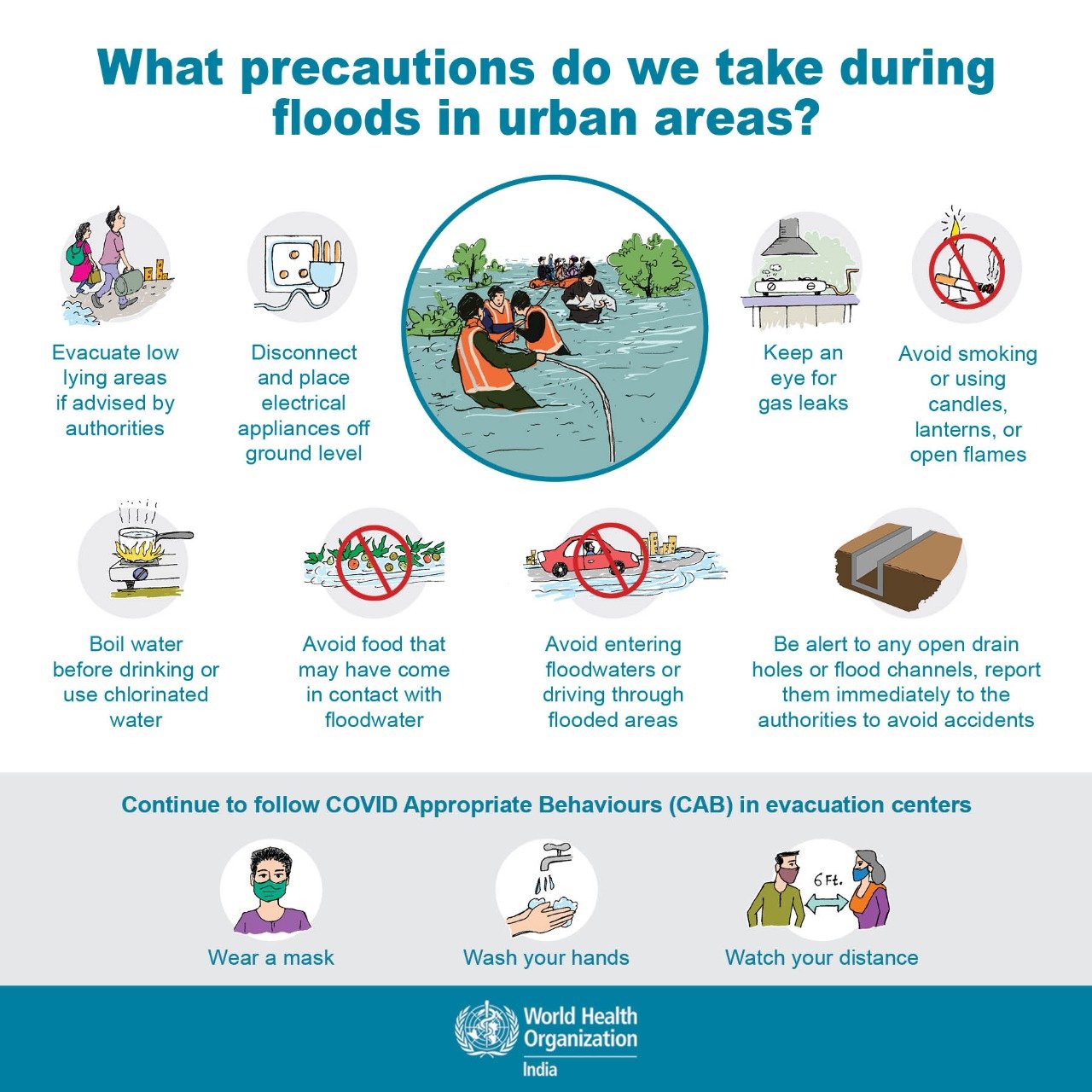Flash Flood Emergency: Causes, Impacts, And Safety Measures

Table of Contents
Causes of Flash Floods
Flash floods are a severe weather phenomenon with several contributing factors. Understanding these causes is the first step in mitigating risk and preparing for potential emergencies.
Intense Rainfall
This is the most common cause of flash floods. Heavy rainfall, particularly in a short period, overwhelms drainage systems, leading to rapid flooding.
- Explanations: Areas with poor drainage infrastructure, steep terrain, and compacted soil are especially vulnerable. Intense thunderstorms and monsoons are primary culprits, delivering massive amounts of precipitation in a short time. The inability of the ground to absorb the water quickly results in surface runoff that accumulates rapidly.
- Examples: Sudden downpours exceeding the capacity of rivers, streams, and storm drains, leading to overflowing waterways and widespread inundation of low-lying areas. Urban areas with extensive paved surfaces are particularly susceptible due to reduced water absorption.
Dam or Levee Failures
Structural failures in dams or levees can unleash catastrophic consequences downstream, leading to devastating flash floods.
- Explanations: Breaches in dams or levees, whether due to aging infrastructure, inadequate maintenance, or extreme weather events (like intense rainfall or earthquakes), can release enormous volumes of water unexpectedly. This sudden surge overwhelms downstream areas unprepared for such a rapid influx of water.
- Examples: The failure of a dam during a heavy rainfall event, resulting in a massive and rapid release of water that causes widespread flash flooding in the areas below. Similarly, levee breaches during high river flows can have devastating effects.
Mudslides and Debris Flows
Landslides and debris flows can act as natural dams, temporarily holding back water before a sudden and catastrophic release.
- Explanations: Heavy rains saturate the ground, destabilizing slopes and leading to mudslides and debris flows. These flows can dam rivers and streams, creating a temporary reservoir that eventually bursts, unleashing a torrent of water and debris downstream, causing a flash flood.
- Examples: A mountainside giving way after prolonged rainfall, subsequently creating a blockage that gives way, releasing a torrent of water and debris in a flash flood event. This often results in significant damage to property and infrastructure.
Sudden Snowmelt
Rapid snowmelt, particularly in spring, can overwhelm rivers and streams, resulting in flash flooding.
- Explanations: Unusually warm temperatures can rapidly melt large snowpacks, dramatically increasing water levels in a short time. This is particularly dangerous in mountainous regions with extensive snow cover. The sudden influx of meltwater can exceed the capacity of rivers and streams, causing them to overflow and flood surrounding areas.
- Examples: A warm spell after a harsh winter causing significant and rapid snowmelt, resulting in overflowing rivers and flash flooding in valleys and downstream communities.
Impacts of Flash Floods
The consequences of flash floods are severe and wide-ranging, impacting lives, property, and the environment.
Loss of Life and Injury
The primary concern during a flash flood is the immediate threat to human life.
- Explanations: Fast-moving floodwaters can sweep people away, trap them in buildings, or cause drowning. The force of the water is powerful enough to move vehicles and even buildings, posing a significant risk to those caught in the flood's path.
- Examples: Individuals being caught in their vehicles or homes during a sudden flash flood, resulting in injuries or fatalities.
Property Damage
Flash floods cause significant damage to homes, businesses, and infrastructure.
- Explanations: Water damage, erosion, and debris carried by floodwaters can destroy buildings, roads, bridges, and other critical infrastructure. The cost of repairing or replacing damaged property can be substantial.
- Examples: Flooded basements, damaged roads and bridges, destroyed crops and livestock, and damage to electrical systems.
Economic Disruption
The aftermath of flash floods severely disrupts businesses, supply chains, and the local economy.
- Explanations: Business closures, reduced agricultural yields, and the costs of repairs and recovery heavily impact the economy. The disruption of essential services and the loss of income can have long-term economic consequences for affected communities.
- Examples: Lost income, high repair costs, decreased tourism, and the overall economic impact on the community.
Environmental Damage
Flash floods can cause significant environmental destruction.
- Explanations: Erosion, pollution, and habitat destruction significantly impact the environment. Floodwaters can contaminate water sources, damage ecosystems, and displace wildlife.
- Examples: Contamination of water sources with sewage and chemicals, destruction of wildlife habitats, and widespread soil erosion.
Safety Measures During a Flash Flood Emergency
Preparation and swift action are vital during a flash flood emergency.
Stay Informed
Monitor weather forecasts and warnings closely.
- Explanations: Pay close attention to local news, weather alerts (such as those issued by the National Weather Service), and official warnings issued by local authorities.
- Examples: Signing up for emergency alerts on your phone, monitoring weather radar, and checking official government websites for updates.
Evacuate Immediately
If ordered to evacuate, do so without delay.
- Explanations: Obey evacuation orders immediately. Do not attempt to drive through flooded areas – even seemingly shallow water can be deceptively dangerous.
- Examples: Leaving your home immediately, following designated evacuation routes, and seeking shelter in a designated evacuation center.
Seek Higher Ground
Find a safe location above the anticipated floodwaters.
- Explanations: Move to higher ground as quickly as possible, well above the anticipated flood levels. Avoid seeking refuge in areas prone to flooding or in structures that may be easily swept away.
- Examples: Moving to a second floor or upper level of a sturdy building, or seeking refuge on higher ground, away from floodplains and waterways.
Avoid Contact with Floodwaters
Floodwaters can be contaminated and electrically charged.
- Explanations: Avoid contact with floodwaters as they can be contaminated with sewage, chemicals, and debris, and may contain live electrical wires. Contaminated water can pose serious health risks.
- Examples: Staying away from downed power lines, avoiding walking or driving through floodwaters, and carefully cleaning up after the flood has subsided.
Conclusion
Flash floods are a serious threat, causing significant loss of life and widespread damage. Understanding the causes, recognizing the impacts, and implementing effective safety measures are crucial for mitigating the risks associated with a flash flood emergency. By staying informed, taking preventative measures, and following safety guidelines, you can significantly reduce your vulnerability and protect yourself and your community. Remember, being prepared for a flash flood is crucial for survival. Learn more about flash flood preparedness in your area and develop an emergency plan to protect yourself and your family. Don't wait for a flash flood warning; prepare for potential flash flooding today.

Featured Posts
-
 Paris Roubaix Bottle Throwing Spectator Surrenders To Police
May 26, 2025
Paris Roubaix Bottle Throwing Spectator Surrenders To Police
May 26, 2025 -
 D C S Historic Pride Season Events Celebrations And Community
May 26, 2025
D C S Historic Pride Season Events Celebrations And Community
May 26, 2025 -
 Debloquer La Rtbf A L Etranger Pourquoi C Est Difficile
May 26, 2025
Debloquer La Rtbf A L Etranger Pourquoi C Est Difficile
May 26, 2025 -
 Tirreno Adriatico 2024 Examining Mathieu Van Der Poels New Canyon Aeroad
May 26, 2025
Tirreno Adriatico 2024 Examining Mathieu Van Der Poels New Canyon Aeroad
May 26, 2025 -
 Hells Angels History Hierarchy And Criminal Activities
May 26, 2025
Hells Angels History Hierarchy And Criminal Activities
May 26, 2025
